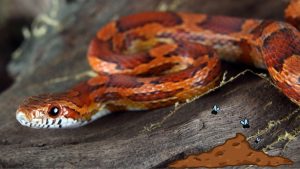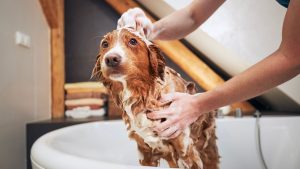When it comes to keeping a leopard gecko as a pet, one of the essential things you need to consider is the size of the tank. The size of the tank is crucial to ensure that your pet gecko has enough space to move around and live comfortably. In this article, we will explore the different factors you need to consider when choosing the perfect tank for your leopard gecko.
One of the first things you need to consider is the size of your leopard gecko. Leopard geckos can grow up to 10 inches in length, so it’s essential to choose a tank that is big enough to accommodate their size. According to Gecko Advice, the optimal tank size for an adult leopard gecko is 30 gallons. However, the size of the tank will depend on the age, size, and number of geckos you choose to house. If you have one leopard gecko, then a 10-gallon tank is sufficient. If you have two leopard geckos, then a 20-gallon tank is recommended.
Another factor you need to consider is the type of tank. Leopard geckos are ground-dwelling reptiles and do not require vertical space, so it’s best to get a flat/horizontal tank. The surface size matters most to ground-dwelling leopard geckos. The internal capacity is the first thing you should always take into consideration when selecting the perfect vivarium for your soft-scaled precious little companion.
Leopard Gecko Tank Size
When it comes to housing a leopard gecko, tank size is one of the most important factors to consider. A proper tank size is essential for the health and happiness of your pet. In this section, we will discuss the minimum tank size, ideal tank size, and factors to consider when choosing a tank size for your leopard gecko.
Minimum Tank Size
The minimum tank size for a leopard gecko is a 10-gallon tank. However, we recommend a 20-gallon tank as a minimum size. A 10-gallon tank may be too small for an adult leopard gecko, and it may not provide enough space for them to move around and explore.
Ideal Tank Size
The ideal tank size for an adult leopard gecko is a 30-gallon tank. A 30-gallon tank provides ample space for your leopard gecko to roam, explore, and climb. It also allows for the proper placement of hides, water dishes, and other necessary items.
Factors to Consider
When choosing a tank size for your leopard gecko, there are several factors to consider:
- Age: Younger leopard geckos can be housed in smaller tanks, while older geckos require larger tanks.
- Size: The size of your leopard gecko should also be taken into consideration when choosing a tank size.
- Number of geckos: If you plan on housing multiple leopard geckos, you will need a larger tank.
- Tank shape: Leopard geckos are ground-dwelling creatures, so a long, shallow tank is preferable to a tall, narrow tank.
In conclusion, choosing the right tank size for your leopard gecko is crucial for their health and happiness. We recommend a 20-gallon tank as a minimum size, with a 30-gallon tank being the ideal size for an adult leopard gecko. Consider the age, size, number of geckos, and tank shape when choosing a tank size for your pet.
Tank Setup
When setting up a tank for a leopard gecko, there are a few key factors to consider. These include substrate, temperature, lighting, hideouts, and decor. Here’s what we recommend:
Substrate
The substrate you choose for your leopard gecko’s tank is important for both their comfort and health. We recommend using a substrate that is easy to clean and won’t cause impaction (a blockage in the digestive system). Here are some substrate options:
- Paper towels
- Reptile carpet
- Tile
- Slate
Avoid using loose substrates like sand or gravel, as they can cause impaction if ingested.
Temperature
Leopard geckos need a temperature gradient in their tank to regulate their body temperature. The warm side of the tank should be around 88-90°F (31-32°C), while the cool side should be around 75-80°F (24-27°C). To achieve this, you’ll need:
- A heat mat or ceramic heat emitter on one side of the tank
- A thermometer to monitor the temperature
Lighting
Leopard geckos are nocturnal and don’t need UVB lighting like diurnal reptiles. However, they do need a light source to regulate their circadian rhythm. We recommend using a low-wattage red or blue light that won’t disturb their sleep.
Hideouts
Leopard geckos are shy creatures and need plenty of places to hide. We recommend providing at least two hideouts: one on the warm side of the tank and one on the cool side. You can use commercial hideouts or make your own out of non-toxic materials like cardboard or PVC pipe.
Decor
While leopard geckos don’t need a lot of decor in their tank, adding some can make their environment more stimulating and enriching. You can add things like:
- Fake plants
- Rocks
- Branches
- A water dish
Just make sure any decor you add is non-toxic and won’t cause harm to your leopard gecko.
Overall, setting up a tank for a leopard gecko isn’t too complicated as long as you keep their basic needs in mind. By providing the right substrate, temperature, lighting, hideouts, and decor, you can create a comfortable and stimulating environment for your pet.
Feeding and Care
Taking care of a leopard gecko requires a little bit of effort, but it’s not difficult. Here are some tips on how to feed and care for your leopard gecko:
Feeding Schedule
Leopard geckos are insectivores, which means they eat insects. A good rule of thumb is to feed your leopard gecko every other day. You can offer them crickets, mealworms, waxworms, or other insects. Make sure the insects are gut-loaded, which means they are fed a nutritious diet before being fed to your leopard gecko. This will ensure that your gecko gets all the nutrients it needs.
Supplements
Leopard geckos require supplements to maintain their health. Calcium and vitamin D3 are essential for healthy bones and proper digestion. You can dust the insects with calcium powder before feeding them to your gecko. Vitamin D3 is also important, but you should be careful not to give your gecko too much. Too much vitamin D3 can be toxic to your gecko.
Water and Humidity
Leopard geckos need fresh water every day. You can use a shallow dish for water, and make sure to change the water daily. Leopard geckos also need a humid environment, but not too humid. The ideal humidity level is between 30% and 40%. You can mist the enclosure with water to increase humidity, but make sure not to make the substrate too wet.
Cleaning and Maintenance
Leopard geckos are easy to care for, but their enclosure needs to be cleaned regularly. Remove any uneaten food, feces, or shed skin from the enclosure. You should also clean the enclosure with a reptile-safe disinfectant every few weeks. Make sure to rinse the enclosure thoroughly before putting your gecko back in.
Overall, taking care of a leopard gecko is not difficult. With proper feeding and care, your leopard gecko can live a long and healthy life.
Frequently Asked Questions
What size tank is best for a leopard gecko?
The optimal tank size for an adult leopard gecko is 30 gallons. However, the size of the tank you should get depends on various factors, such as the age, size, and number of geckos you choose to house.
Can a leopard gecko live in a 10 gallon tank?
While a 10-gallon tank is the minimum size for a leopard gecko, it may not provide enough space for them to move around and be comfortable. We recommend getting a larger tank to ensure your gecko’s well-being.
What is the minimum tank size for a leopard gecko?
As mentioned earlier, a 10-gallon tank is the minimum size for a leopard gecko. However, we recommend getting a larger tank to provide more space for your gecko to move around and explore.
Is a 20 gallon tank enough for a leopard gecko?
A 20-gallon tank may be sufficient for a single adult leopard gecko, but it’s always better to go for a larger tank if possible. A larger tank will provide more space for your gecko to move around and explore, which is essential for their mental and physical well-being.
Should I get a long or tall tank for my leopard gecko?
Leopard geckos are terrestrial creatures, which means they spend most of their time on the ground. Therefore, we recommend getting a long tank rather than a tall one. A long tank will provide more ground space for your gecko to move around and explore.
What is the recommended tank size for two leopard geckos?
If you plan to house two leopard geckos together, we recommend getting a 40-gallon tank or larger. This will provide enough space for both geckos to move around and explore without feeling cramped. However, keep in mind that housing two geckos together can be risky, as they may fight or transmit diseases to each other. It’s always better to house them separately if possible.
Author
-

Lawrence, the founder of Pet Ploy, established the website in mid-2023. With a lifelong love for pets, Lawrence has been surrounded by a variety of animals since his early years. From dogs and cats to guinea pigs, rabbits, fish, and more, he has experienced the joy of caring for a diverse range of pets. Drawing from his deep-rooted passion, Lawrence created Pet Ploy to share his knowledge and enthusiasm with fellow pet enthusiasts. Through the platform, he aims to provide valuable insights, tips, and resources to promote the well-being and happiness of pets everywhere.











